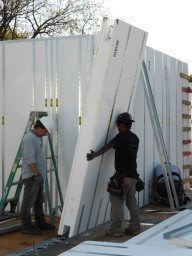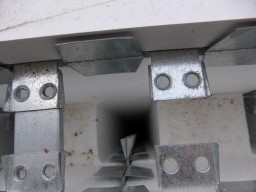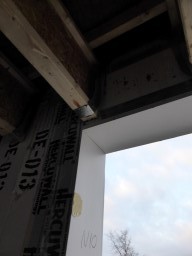Imagine an ICF wall that snapped 4’x9’ sheets together like Lego, had 75% less concrete than conventional ICF which was replaced with high R-value foam and all structural steel was incorporated into the 50LBS panel. This isn’t a dream, it’s a reality and Pro ICF’s Chris Johnson has been building with this American technology called Hercuwall.

You don’t have to be Hercules to move these 5′x9′ 50 LBS panels! Install the metal tracks on the floor and slot the panel into the race.
The website describes the system as follows. “HercuWall® panels contain voids that are filled with concrete. These voids determine the shape of the concrete within the HercuWall® system which is analogous to a concrete stud wall. There are vertical concrete studs placed on regular 12” centers, a continuous concrete base, and a continuous concrete bond beam at the top of the wall. Each concrete stud attaches to a ShearStrip™ which are juxtaposed facing to the interior at one stud and the adjacent studs facing the exterior.”

Looking down into the wall of a window sill, you can see the voids for concrete as well as the and galvanized steel “Shear Strip” system that will be embedded into the Agilia.
Because there’s so significantly less concrete, there’s more room for higher R-value Expanded Polystyrene. With a lower GWP than XPS, the EPS panels come custom cut with rough openings that are actually not rough at all, but quite smooth and square.

The “rough openings” in Hercuwall are anything but rough. The CNC cuts are tight and square which to keep the soupy Agilia in, the bucks are made of what appears to be PVC.
Though BlueGreen Group hasn’t tested the builds for air tightness or thermal bridging yet, we’re anticipating that these walls will be more air tight than traditional ICF walls. In traditional ICF walls, we typically find a great deal of air leakage around rough openings as the concrete mixes used can be hard to work around the bucks. With Hurcuwall, the concrete used is LAFARGE’s Agilia and with a slump of 22” we’re expecting that voids around openings to be significantly minimized – all the same we look forward to testing a few of these buildings!
